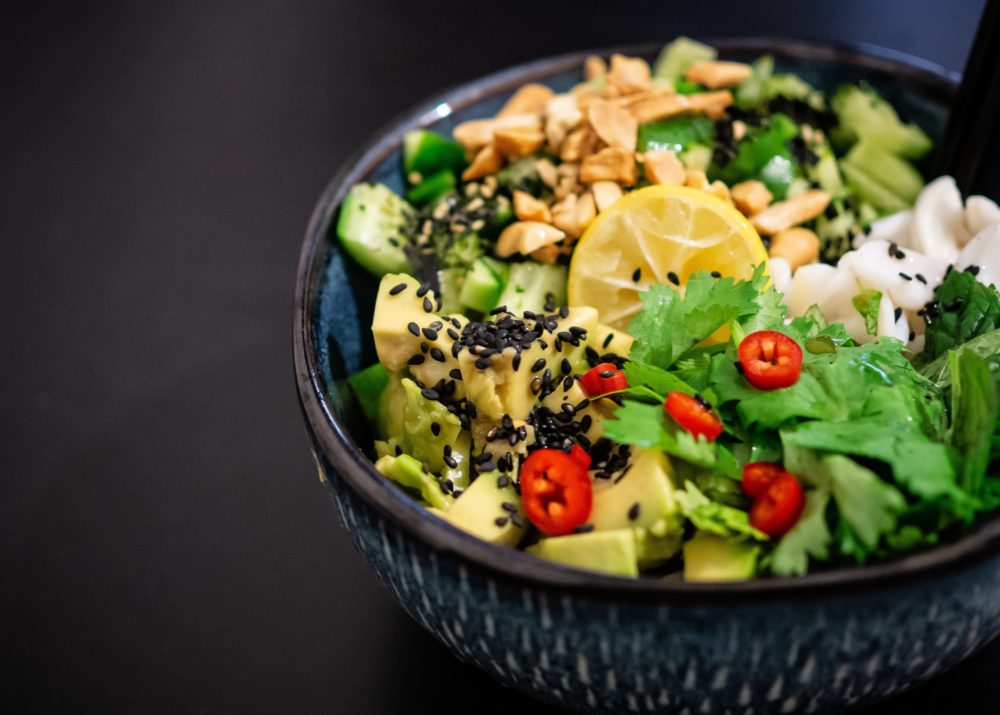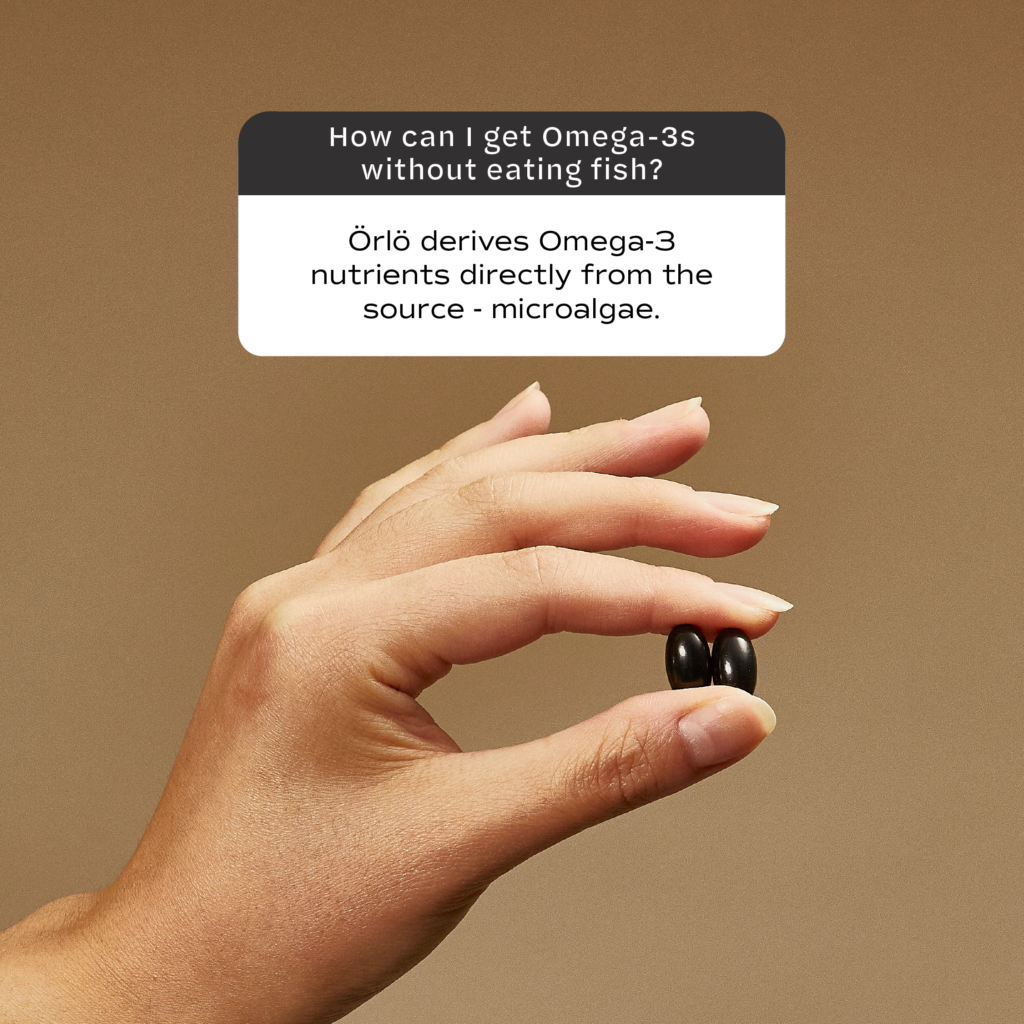
Vegetarians and vegans are often concerned about whether they are getting the right amount of key nutrients to support their long-term health and success, especially when they have high protein requirements. Many assume that their fat consumption is balanced between omega-3s and omega-6s given their dietary choices, but that isn’t always true. Omega-6s lurk in many vegetarian and vegan foods, and it can be hard to get enough of the critical omega-3s, eicosapentaenoic acid (EPA), and docosahexaenoic acid (DHA). This article explores why your balance might be out-of-whack, and what you can do to correct it.
Omega-3s and omega-6s comprise a set of fats referred to as essential fatty acids. They are called essential because our bodies cannot create them on their own, and we, therefore, need to consume them in the food we eat. These important fats are involved in regulating inflammation in the body, transmitting information from cell to cell, trafficking nutrients and eliminating toxins. In short, they are involved in more processes within our body than you think. And these two sets of fats need to be consumed in balance to achieve optimal health. Current data states that generally speaking, Americans consume 15 – 20 times more omega-6 than omega-3, and that truth does not shift dramatically with a plant-based diet, unless you’re specifically working to balance your consumption of omega-3 and omega-6 containing foods.
Getting enough omega-3 in a dietary world that seems to be constructed of highly processed foods can be really tough to do. It’s even harder to get the most highly bioactive EPA and DHA since they don’t occur in terrestrial plant sources.
While your body can turn the plant-based omega-3, alpha linoleic acid (ALA), into EPA and DHA, the process is slow and the yield is low. To improve your chances and balance your fats, it’s best to reduce your consumption of omega-6 containing foods and up your consumption of omega-3 containing foods.
So, where are omega-6s hiding in the foods you already consume? And what can you do to increase your omega-3s?
Reduce Consumption of Foods High In Omega-6

The first step in balancing your fats is to reduce your consumption of omega-6-containing foods. Omega-6s lurk in most highly processed foods in canola, safflower, corn, peanut, and soybean oils. These oils are almost exclusively omega-6s. Omega-3 levels that might have been naturally present in these oils are actually reduced in processing in order to improve their shelf life. So, to reduce your consumption of these omegas, follow these simple steps:
- Stop cooking with seed and legume oils. Full stop. There are healthier alternatives.
- Sautee or bake savory foods with olive oil or avocado oil. Both olive and avocado oils are high in the non-essential but important fat, oleic acid, an omega-9 that is heart-healthy. While these fats have a lower smoke point, they can still be used in low-mid temp sauteing and baking. Unfortunately, you can’t use flax oil to cook because its flash point is so low.
- Cook high-temp foods with coconut oil. Coconut oil is high in medium chain triglycerides and it has a high flash point. Replacing other solid fats with coconut oil is health-promoting.
- Stop consuming breaded or fried foods. This is especially important when you dine out because you won’t be able to replace that oil with coconut oil or if you consume dairy products, ghee.
- Make your own salad dressing. Salad dressing might boast “olive oil” on the front panel, but when you dig into ingredients, it’s often the 4th or 5th ingredient, after things like soybean oil or canola oil and vinegar. You can choose from a plethora of health-promoting oils that do not contain canola or soybean oil to make your salad dressing, from olive oil to walnut oil to flaxseed oil. Walnut oil and flaxseed oil have an added benefit – they contain the omega-3 ALA and can help augment your omega-3 levels.
- Avoid all foods that contain trans fats (partially or fully hydrogenated oils). Read your labels. Often you’ll notice partially or fully hydrogenated oils in “other” ingredients, even though the product may say it has zero grams of trans fats. This can be really misleading.
Generally speaking, focus on consuming whole foods, and no highly processed foods. This will ensure your chances of consuming omega-6 and omega-3 in balance is simply easier. Getting to that 1:1 ratio can be in sight!
Increase Your Consumption of Foods That Contain Omega-3s

While you can always augment your omega-3 consumption by taking a supplement or two, finding ways to integrate foods that are higher in omega-3s into your diet provides a stronger foundation for health. Supplements with EPA and DHA from algae can then be that icing on the cake that protects and preserves your health for the long term.
So what foods should you eat more of to increase your omega-3 levels?
- Eat walnuts, walnut oil, flax seeds, and flax oil. The walnut is higher in the omega-3 alpha linolenic acid than other fats, as is flax. By consuming these nuts and seeds, as well as their oil, you are supplying your body with an important omega-3 building block. While this is not a direct source of EPA or DHA, it is still a very healthy (and tasty) fat that you can use in low temp foods.
- Consume DHA Fortified Foods. Algae oils that are high in DHA have been used for some time to augment the nutrition of a few core foods, including baby formula and protein drinks.
- Aim to consume more whole foods, including fruits, vegetables, nuts, and lean protein. Taking a “whole foods” approach to nutrition will limit your omega-6 consumption and point you in a safer direction.
- Take an omega-3 EPA + DHA supplement, preferably from a sustainably sourced and highly bioavailable algae source in the polar lipid form. This both ensures you absorb more of the omegas, and that you don’t experience a fishy burp. I like Örlö Nutrition. Orlo’s omegas are in the polar lipid form for 3x the absorption over traditional fish and algae oils. You get more with less in an easy-to-swallow pill that won’t give you a fishy burp.

If you’re vegetarian and on your path to vegan, you might consider adopting Jonathan Safran Foer’s recommendation from his recent book We Are The Weather. He suggests that we give up all animal products before dinnertime. This approach helped me eliminate milk from my diet, and I’m on my way to eliminating cheese, yogurt, and butter next. Eating this way will reduce your consumption of saturated fats and the omega-6, AA (arachidonic acid) which can be high in dairy products.
When you reach your ideal ratio, you’ll notice a few key benefits from having more supple skin with fewer breakouts to greater joint comfort, clearer vision, and a clearer mind. Your energy levels will be more stable, and your ability to tackle the stressful challenges of your everyday life will seem easier. When our bodies are in balance – when we reach homeostasis – life is simply better. You may not be able to put your finger on it – but you will feel better.
For additional resources and to learn more about omega-3s, visit https://orlonutrition.com/blogs/news.
About the Author
Corinna Bellizzi, MBA is a natural products industry executive and omega-3 expert who pioneered the growth of Nordic Naturals from less than $1 million to over $100 million in annual sales. Given her concern for the future health of people and the planet, she shifted her focus from fish-sourced omegas to algae in 2016. An activist at heart, she launched her podcast, Care More Be Better, in 2021 to cover social and ecological issues that affect us all. Today she leads Örlö Nutrition, a new brand that features the world’s first carbon-negative omega-3s. She hosts a new podcast, Nutrition Without Compromise, to support that effort where she covers health topics without compromising your ethics, or the health of our home planet.

